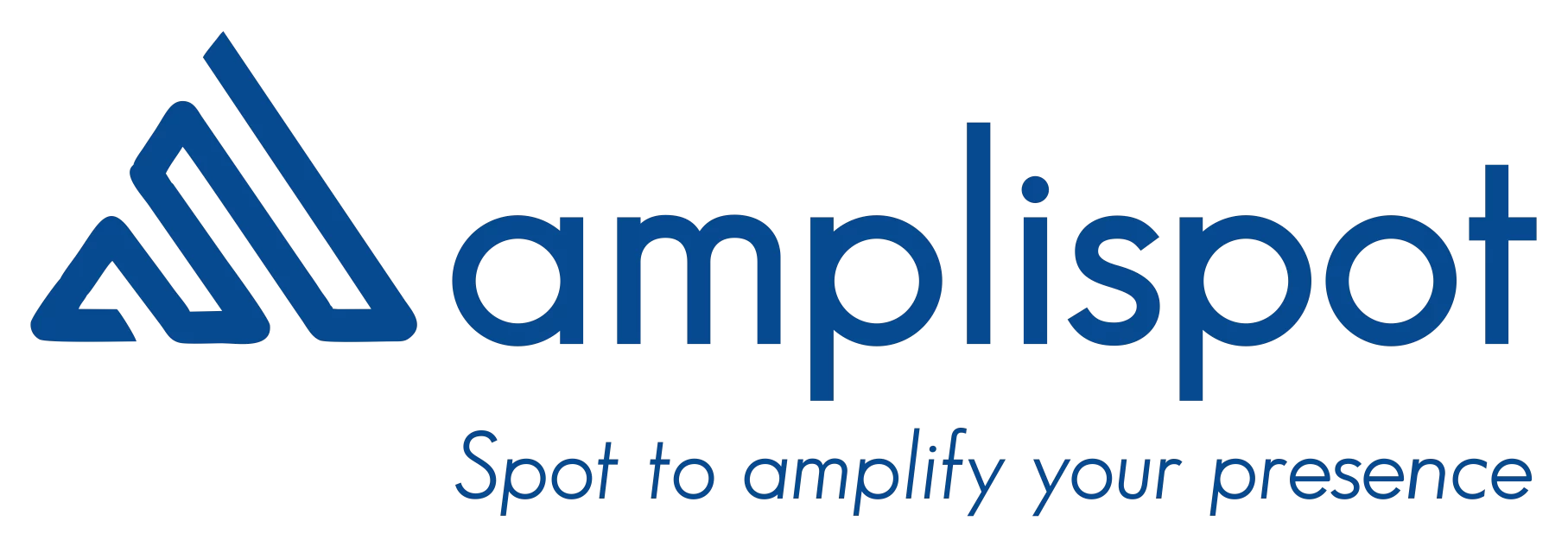Sales leaders in India’s banking, financial services, and insurance (BFSI) sector are facing a familiar dilemma: their sales representatives are so busy servicing clients and closing deals that they struggle to find time for prospecting new business. The result is a prospecting bottleneck – a backlog or shortage of fresh leads in the pipeline. This raises a critical question: can automation help break this bottleneck and keep the pipeline flowing?
To answer that, we need to examine why prospecting is such a challenge in B2B financial sales and how an automated approach might ease the strain. Let’s explore the data and insights behind this issue, and see what an automation-driven prospecting strategy could mean for sales teams in India’s financial industry.
The Prospecting Bottleneck in India’s B2B Financial Sales
Prospecting – the work of identifying and reaching out to potential customers – consistently ranks as one of the toughest parts of the sales process. In fact, 42% of salespeople say prospecting is the hardest part of their job, topping the list ahead of even closing deals (36%) (130 Eye-Opening Sales Stats to Consider in 2025 - By Category). This difficulty is amplified in the financial services and insurance space, where sales cycles are trust-intensive and reps often juggle complex existing accounts.
One big reason prospecting suffers is lack of time. Numerous studies show that sales reps spend a surprisingly small fraction of their work week on actual selling. According to Salesforce research in India, sales teams report that only about 27% of their time is spent on core selling activities – the rest is eaten up by tasks like writing emails, data entry, meetings, and researching prospects (State of Sales in India: How AI and Data are Changing the Game - Salesforce). This means over two-thirds of a rep’s time is spent on “non-selling” work, leaving limited bandwidth for proactive outreach to new leads.
(image) Figure: Only about a quarter of a typical sales rep’s time is spent actively selling, with the majority consumed by administrative and prospecting-related tasks (State of Sales in India: How AI and Data are Changing the Game - Salesforce). This inefficiency directly contributes to the prospecting bottleneck in many organizations.
Digging deeper, a 2023 B2B prospecting survey found that on average, sales reps spend 13.4 hours per week just researching prospects – nearly a third of their work hours (B2B Sales Prospecting Report: 2023 - DemandScience). That’s time not spent actually contacting those prospects or closing deals. Worse, a lot of that effort may be wasted: roughly 50% of sales time is potentially lost on unproductive prospecting (chasing leads that go nowhere, or repetitive outreach tasks) (Workflow Automation Statistics & Trends in 2025 | Cflow). No wonder sales pipelines often run dry; reps simply can’t dedicate enough quality time to consistently fill them.
The impact on performance is significant. Without a steady influx of qualified leads, even top-notch salespeople struggle to meet targets. It’s telling that only 8% of Indian sales professionals are confident they will meet 100% of their sales targets this year, and sales leaders cite inefficient prospecting and too much time on non-selling tasks as a major factor (State of Sales in India: How AI and Data are Changing the Game - Salesforce). In India’s fast-growing financial sector – where opportunities are vast but competition is fierce – this prospecting bottleneck can translate to missed revenue and stagnant pipelines.
However, there is a silver lining: sales teams and leaders are increasingly aware of this problem and are looking to technology for answers. Modern sales organizations are experimenting with automation and artificial intelligence (AI) tools to relieve reps of routine tasks. In fact, nearly 90% of sales teams in India are implementing or piloting AI to boost productivity and customer engagement (State of Sales in India: How AI and Data are Changing the Game - Salesforce). Prospecting is a prime candidate for such tech-driven transformation. Could an automated system take over some of the prospecting load, and do it more efficiently at scale? Let’s see how that might work in practice.
Automating Prospecting: How It Works
Imagine each of your sales reps had a virtual assistant that continuously scouts for and engages new prospects on their behalf. That, in essence, is what automated prospecting systems aim to do. They combine the reach of digital marketing with the focus of sales targeting. Here’s how a typical automated prospecting workflow might function in a B2B financial sales context:
- Mapping Targets: The system starts with the sales rep’s target universe – say a list of 1000 potential business clients for an insurance product, or a territory of mid-sized banks for a software solution. These targets can be drawn from your CRM, purchased lead lists, or defined based on ideal customer profiles. The key is that the rep or manager sets the criteria for who to go after (industry, job title, company size, etc.), and the automation tool handles the heavy lifting of outreach.
- Automated Multi-Channel Sequences: Instead of waiting for reps to manually cold-call or email each prospect (a task that often gets deferred), the software sends out pre-crafted sequences of touchpoints automatically. For example, it might send an introductory email introducing a new insurance solution, wait a few days, then connect on LinkedIn or send a follow-up message, etc. These sequences can be personalized with data inserts (e.g. prospect name, company, industry) so that they don’t feel like generic spam. Notably, high-growth companies are embracing this approach – 61% of such companies use AI-powered sales prospecting tools to automate and personalize outreach (10 Sales Prospecting Statistics For 2024). Automation ensures no prospect is forgotten: every target gets a systematic series of nudges, even while the sales reps themselves are busy closing other deals.
- Tracking Engagement and Scoring Leads: As the sequence runs, the system tracks how each prospect interacts. Did they open the email? Click on a link to your whitepaper? Visit your pricing page? Perhaps even reply asking for more info? All these digital signals are collected. Using this data, the system can score or rank prospects by their level of engagement or “warmth.” For instance, a contact who opened two emails and clicked a link is likely more interested than one who never engages. Modern AI can even compare behavior to past successful prospects to predict who is a hot lead. This addresses a common pain point for sales teams – 24% of sales pros said that lack of lead prioritization was their #1 prospecting challenge (B2B Sales Prospecting Report: 2023 - DemandScience), and nearly half of reps struggle to figure out which accounts to prioritize (Statistics Every Salesperson Should Know in 2023). Automation can effectively triage and highlight the best leads.
- Alerting Sales at the Right Moment: Perhaps the most important step – when a prospect becomes highly engaged (for example, clicking on an email and spending time on your product webpage, or responding positively to a message), the system alerts the appropriate sales rep in real time. It might create a task in the CRM, send an email or mobile notification to the rep: “Prospect X at Company Y has shown high interest – time to reach out personally.” The idea is that by the time a human salesperson steps in, the prospect is already partially educated about the offering and “warmed up” by the earlier automated touches. This is crucial in financial B2B sales where trust and relationship are key – the rep can now engage in a timely, informed way, rather than making a completely cold call. It’s well known that speed matters: being the first vendor to meaningfully respond to a buyer can dramatically increase win rates (130 Eye-Opening Sales Stats to Consider in 2025 - By Category). Automation helps ensure rapid follow-up on hot leads, without relying on a rep’s memory or bandwidth.
- Continuous Nurturing of Lukewarm Leads: Not every prospect will bite immediately – some might show a little interest (open an email, maybe download a report) but not ready to talk yet. Instead of dropping these leads, the automated system can keep them on a slower nurture track: occasional educational content, invites to webinars, industry insights, etc. This keeps your company on their radar until they are ready to engage or until their engagement score increases. It’s like planting seeds and periodically watering them. Salespeople typically don’t have time to do this long-tail nurturing for dozens of prospects, but an automated workflow excels at it. Research shows 80% of sales require five or more follow-ups, yet most reps (92%) give up after the fourth attempt (130 Eye-Opening Sales Stats to Consider in 2025 - By Category). Automation ensures persistence without extra effort, so potential deals aren’t lost due to neglect.
In short, an automated prospecting system acts as a force multiplier. It ensures consistent outreach at scale – every target account gets attention – and it intelligently separates the signal from the noise, so that sales reps spend their limited time on the most promising opportunities. As Gartner notes, by 2025 the vast majority of B2B sales interactions will occur in digital channels (around 80%) (The Future of Sales: Digital First Sales Transformation Strategies | Gartner), reflecting buyers’ preference to self-educate and engage online. Automation helps your sales team meet buyers where they are, digitally, without drowning in manual work.
Notably, none of this means replacing the human salesperson. On the contrary, it’s about augmenting the sales rep. The automated system handles the initial legwork – the repetitive emailing, monitoring, and basic info sharing – while the sales rep jumps in when a prospect is qualified and interested, ready to have a meaningful, consultative conversation. This is especially important in financial services sales, where complex products (loans, insurance policies, investment services) often require a consultative, trust-building approach. Automation tees up the conversation; the sales rep closes the deal.
Key Benefits of an Automated Prospecting System
If implemented well, automating the prospecting process can yield significant advantages for B2B sales teams in the financial sector. Here are some of the major benefits, backed by data and industry insights:
- Time Saved for High-Value Activities: By offloading routine tasks (like researching contacts and sending initial outreach emails) to software, sales reps reclaim precious hours in their week. In one estimate, sales teams save about 5 hours per week just by automating day-to-day task (Statistics Every Salesperson Should Know in 2023)】. Consider the earlier statistic that reps spend ~13 hours/week on prospect research – much of that can be trimmed. McKinsey finds that early adopters of sales automation see a 10–15% improvement in efficiency and significantly more customer-facing time for rep (Sales automation: The key to boosting revenue and reducing costs | McKinsey)】. In practical terms, that means your salespeople can invest those saved hours into meeting clients, refining proposals, or learning about new financial products – the things that genuinely require their expertise.
- Fuller Pipeline and Consistent Outreach: Automation helps maintain a healthier sales pipeline by ensuring prospects are constantly being added and nurtured. Instead of the feast-or-famine cycle (where reps prospect only when they have downtime), outreach becomes continuous and systematic. This consistency pays off: B2B teams have seen a 10% increase in sales pipeline on average by automating sales process (Workflow Automation Statistics & Trends in 2025 | Cflow)0】. Similarly, companies that use marketing/sales automation to improve lead quality report generating 3× more leads per month than those who don (Workflow Automation Statistics & Trends in 2025 | Cflow)8】. For financial services firms in India looking to expand into underserved markets or new segments, a fuller pipeline driven by automated efforts can accelerate growth. It also means sales managers have more visibility into early-stage opportunities, making pipeline management more predictable.
- Improved Lead Quality and Conversion Rates: An automated system not only pulls in more leads; it helps qualify and prioritize them through scoring and analytics. This means sales reps spend their time on leads that are more likely to convert. The outcome can be dramatic: one study showed that automated lead nurturing (the kind that sends timely follow-ups based on behavior) led to a 200% increase in conversions for some bra27】. Another real-world example: motorcycle manufacturer Royal Enfield used AI-driven lead scoring to identify high-propensity leads, resulting in dealers converting **23% of those leads into sale (State of Sales in India: How AI and Data are Changing the Game - Salesforce)29】 – a clear boost to efficiency. In a financial B2B context, this could translate to higher win rates on, say, insurance policy sales when focusing on engaged CFOs versus cold calls to uninterested prospects. Higher conversion rates mean better ROI on your prospecting efforts.
- Better Informed and Timely Follow-Ups: With automation tracking every click and response, sales reps are armed with rich context when they do engage a prospect. They know which whitepaper the prospect read, or that they opened the last three emails in a sequence – invaluable insight for tailoring the conversation. Reps can approach the call as a problem-solver: “I noticed you checked out our report on SME credit risk. Do you have questions about how that applies to your business?” This informed approach builds credibility. It aligns with what buyers want: 80% of B2B buyers prefer sales reps who act as trusted advisors, providing insights into their industry (10 Sales Prospecting Statistics For 2024)-L4. Automation provides the data for reps to be more relevant. And because the system alerts reps in real time, they can follow up at the peak of interest – striking while the iron is hot. Quick, knowledgeable follow-ups increase the chance of moving the prospect to the next stage (for example, scheduling a product demo or a needs assessment meeting).
- Enhanced Sales Team Morale and Focus: Prospecting can be a grind. Constant rejection and tedious admin work can burn out even the best salespeople. Automating the more tedious parts can improve job satisfaction by letting reps spend more time doing what they love (and are usually best at) – building relationships and closing deals. It also helps new sales hires ramp up faster, since much of the initial outreach can be templated and automated while they learn the ropes. The end result is often a more productive and happier sales force, which tends to correlate with better performance. It’s worth noting that companies adopting these tools are often the ones pulling ahead – 61% of high-growth companies use AI-driven prospecting (10 Sales Prospecting Statistics For 2024)L105】, indicating that embracing automation is becoming key to staying competitive.
Of course, these benefits don’t come automatically (pun intended). They depend on implementing the right tools and processes, and integrating them with your sales team’s workflow. In India, many firms are adopting CRM-based automation, email sequencing tools, and AI-driven lead platforms. The good news is that the learning curve is not steep – many reps find that having an “AI co-pilot” for prospecting is intuitive, as it essentially queues up their to-do list with the highest-impact actions each day.
Conclusion: A Balanced, Insight-Driven Approach
Automation is not a magic wand that instantly fixes all prospecting challenges, but it’s proving to be a powerful solution to a very real bottleneck. For B2B sales teams in the financial and insurance sector, where relationships and timing are everything, automating prospecting can unlock valuable hours, surface better leads, and ensure no opportunity slips through the cracks. The data is compelling – from increased pipeline volume to higher conversion rates – and it aligns with the experience of forward-thinking sales organizations.
That said, a balanced approach is key. Automation should augment, not replace, the human touch. The goal is to let machines do what they do best (handle repetitive tasks, analyze large data sets for patterns, send timely communications) so that humans can do what they do best (build trust, solve complex problems, and cultivate client relationships). In a country like India, where business culture still values personal connection highly, this balance is especially crucial in financial services sales. An automated email might initiate the contact, but a knowledgeable sales rep closes the deal and earns the client’s long-term loyalty.
Sales leaders considering this approach should also ensure they have quality data (for accurate targeting and personalization) and craft thoughtful outreach content that resonates with the financial decision-makers they’re aiming to engage. Automation isn’t about blasting generic emails at scale – it’s about scaling smart touches. When done right, prospects feel more catered to, not less, because they receive relevant information and quick responses to their digital signals of interest.In summary, automation can indeed help solve the prospecting bottleneck for B2B financial sales – by acting as a digital prospecting assistant that keeps the top of the funnel flowing. It offers a way to work smarter, ensuring that sales reps in banks, insurance firms, and financial SaaS companies across India can focus on closing deals without worrying that their pipeline will run dry. The competitive edge will go to those who blend the efficiency of automation with the empathy and expertise of human salesmanship. For India’s BFSI sales teams seeking to drive growth in 2025 and beyond, that could be a game-changer worth embracing.


































